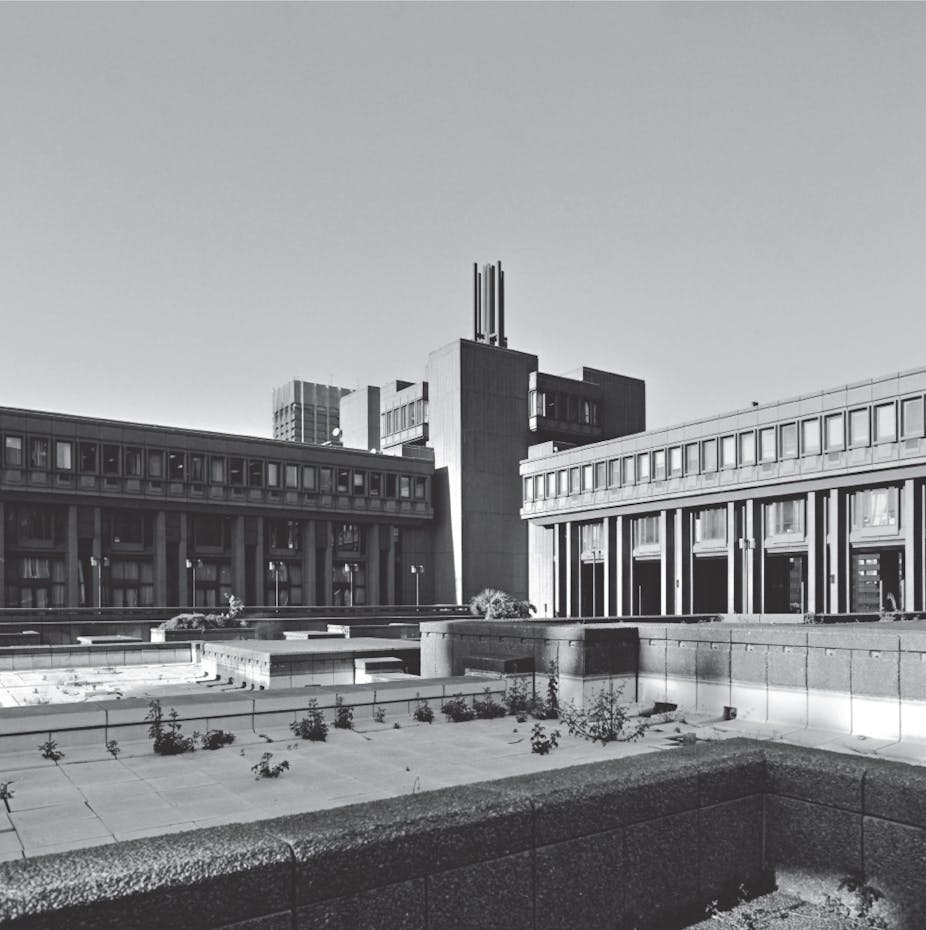Up Up: Stories of Johannesburg’s Highrises is a slab of a book about buildings and stories from Johannesburg’s original city centre. The project is put together by four young editors from Switzerland with considerable support from a number of Johannesburgers.
The local authors have generously shared their experiences as urban researchers and latter-day flâneurs (a flâneur is a timeless urban wanderer-poet rooted in nineteenth-century French literary culture).
The Up Up authors’ texts alternate with images sourced from the mid-century architecture journal, the South African Architectural Record, and contemporary photographs taken by Mpho Mokgadi. In its feeling and form, Up Up is a scrapbook of interviews, writing and appropriated images curated to make a point about Joburg urbanism.
This story is largely about the reuse of the city’s 60-year old built fabric to house entirely new functions. The quantity and quality of the modernist spaces that once housed commercial functions has been a significant resource for the post-apartheid reinvention of the city. They’re now made up of transport interchanges, dense trading zones, affordable apartments, banking offices and private colleges.
Tale of two couples

In their short essays, the writers disaggregate this change to the scale of individual buildings. One such tale places photos and interviews with two couples side by side. The elderly Gaitskills recall working lives in and around Chrysler House in the 1950s, sixties and seventies. Alongside them, a student couple, the Baloyi-Myakayaya’s, describe their contemporary life in one of the apartments into which the same building was recently reconfigured.
Both of the couples’ stories convey their detachment from the other histories of Chrysler House. Their poignant tales illustrate how the building’s early grandeur was abandoned and the shell reinvented as mere shelter, leaving nothing to hold onto as a sentimental place.
In other fragments of inner city memoirs, Tanya Zack and Rodney Place’s more playful relationships with the city into which they drop to experience its changes allow them to evoke vivid images of the unexpected life within its frames.
There is a similar optimism from the theorists who try to explain the city fabric itself as an agent of positive change. Thiresh Govender reflects on Highpoint’s unresolved new identity. The Urban Think Tank writers find a lesson about inclusive cities from our shared walk down Delvers Street.
Katrin Murbach, one of the Swiss co-editors, comes closer to the stark economics that curtail the city’s potentials in a short text that evokes the movement of gold during the years of apartheid. Twice weekly Swissair flights transported bullion from Joburg’s mining belt to the coffers of her homeland, leaving extreme environmental damage in their jet-stream.
Reinventing the city

Collectively, the essays capture a city that is unable to fully reinvent itself in the absence of capital, but is too valuable a physical asset to be lost. Simon Sizwe Mayson tells how, from his office in the Department of Housing in the former Schlesinger Centre, the government is currently allocating dwellings to people who have been on a list since 1997.
The millions of square meters of built space in the city centre play some role in relieving this pressure to deliver housing. But it cannot replace the lost economic engine that created it in the first place.
The way that Up Up conveys its urban narrative is self consciously binary. It contrasts the vertical forms of buildings with the relational spaces of their users, and the black and white images of old fabric with the anecdotal flow of contemporary texts.
Like the city, however, it struggles to define a third form of inhabitation that could make something of the city other than an extreme case of pragmatic reuse. There is no mention of the possibility of industrial revival, whether in the designer forms it is taking in Maboneng, or the potentials of the clothing sweatshops glimpsed in Delvers Street. Without such content the book conveys a bleak reading of the city’s future.
One is left unsure of the value of this project to the city that it curates. On the one hand, it does gather together a set of texts from many active city researchers, even as it fails to properly pay its debt to architect Clive Chipkin whose extraordinary Johannesburg histories were clearly a rich resource.
Thankfully, it avoids the so-called “slum porn” styling of projects like Torre David in Venezuela, where intimate portraits of poor people living in modernist frames are insensitively put on show for the West. But there is still a sense that modernist buildings globally are considered to be European cultural heritage, while their afterlives are only symbolically shared.
It is true, however, that taking stock of the city’s modernist buildings and their enormous potential for reuse is a necessary public project for Johannesburg. If its portrayal of reuse, through the aesthetic presentation of poignant details of individual stories and images of well crafted plans can bring this message home, then Up Up goes in the right direction.
UP UP: Stories of Johannesburg’s Highrises Edited by Nele Dechmann, Fabian Jaggi, Katrin Murbach and Nicola Ruffo. Photography by Mpho Makgadi. Fourthwall Books and Hatje Cantz, 2016

